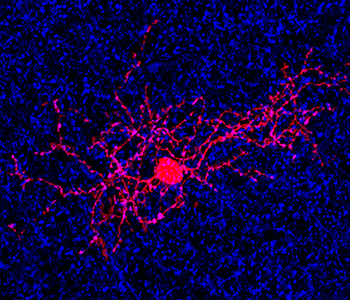You are driving the car at 40 mph. Suddenly, you see a child dart into the street. You hit the brakes. The car stops in time, and a disaster is averted. But how did your eyes detect that movement? It’s a question that has confounded scientists. Now we have an answer.
Researchers at the Washington University School of Medicine in St. Louis have an answer to that question - a neural circuit in the retina at the back of the eye carries signals that enable the eye to detect movement. The finding could help in efforts to build artificial retinas for people who have suffered vision loss.
The research, published June 16 in the online journal eLife, identifies specific cell types in mice that form a neural circuit to carry signals from the eye’s photoreceptors to the brain’s visual cortex, where those signals are translated into an image.
The ability to detect movement is key to an animal's survival, allowing them to detect the presence of predators, The same type of cells are also found in rabbits, cats, primates and likely humans, too. The cells look similar in every species, and probably function in a similar manner as well.
Studying the neural circuit, Tahnbee Kim, a graduate student in Kerschensteiner’s lab, identified a specific type of cell called an amacrine cell that’s key to detecting motion. Amacrine cells are thought to inhibit, or tamp down, the activity of other cells called ganglion cells. This process ensures that the brain doesn’t receive too much visual information, which could distort an image.
Robert J. Boston
Principal investigator Daniel Kerschensteiner, MD (left), and graduate student Tahnbee Kim have identified a neural circuit in the retina that plays a key role in detecting motion in the visual field.
Using a technique that combines a powerful microscope with a method that allows researchers to track how often retinal cells fire, the researchers also showed that when there is motion in the visual field, a specific subtype of amacrine cell excites ganglion cells, signaling the brain so it becomes aware that an object is moving.
The discovery that this type of cell transmits object-motion signals is an important step in understanding how the eye senses motion. It also provides a high level of detail that will be needed to design computerized, artificial retinas, which will need to detect motion as well as sense light.
This work was funded by the National Eye Institute (NEI) of the National Institutes of Health (NIH). Additional funding was provided by the Research to Prevent Blindness Foundation.
Source: WUSTL News and eLife
Read about Retina Global here.


No comments:
Post a Comment
Thanks for your comments. We will get back to you shortly if there is a need to respond to it.
- Admin, Retina Global
Read more on Retina Global.